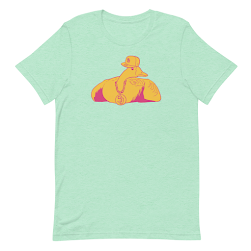Multiple San Diego restaurants have leaned into the trend, offering cheese wheel pasta as a signature menu item. Vincenzo Cucina & Lounge in Little Italy even has an entire cheese wheel pasta bar featuring different several cheeses. Other spots like Monello, Bencotto, Aromi, La Pastaia, Giardino, Acqua e Farina, and Panevino have joined in, some charging well north of $30 per dish. While undeniably theatrical, critics say the real cost might be to diners’ health.
In theory, the idea is decadent: hot pasta hits the cheese wheel, melts the interior slightly, and absorbs its salty, umami-rich flavor. In practice, critics say it’s a bacterial playground. The dish, in essence, involves taking freshly cooked pasta and tossing it inside a large wheel of cheese -typically Parmigiano Reggiano or Grana Padano - where it melts and mingles with the cheese’s interior before being served immediately. Some restaurants do this table-side, wheeling around the same massive cheese block from table to table, often without temperature control, sanitation between uses, or proper storage.
That's where things start to go off the rails.
According to multiple local chefs, these cheese wheels can become breeding grounds for bacteria when misused. The hot pasta brings moisture and starch, which mix into the softening cheese interior. If the wheel is used repeatedly throughout a dinner service - especially on warm nights - without being scraped down and properly cleaned, harmful bacteria can flourish. Food safety guidelines dictate that cheese like Grana Padano should be kept at food-safe temperatures and sanitized between uses. But that rarely happens in practice.
One Italian chef says they’re appalled by the cheese wheel pasta trend, which they claim is largely a gimmick for tourists and doesn't reflect traditional Italian cooking. In fact, one noted that cheese wheels are rarely used this way in Italy, and when they are, they’re usually smaller wheels prepared for limited batches, with sanitation done immediately after. In contrast, many San Diego restaurants roll out the same massive cheese wheel all night, tossing in different sauces and proteins without regard to cross-contamination or cooling periods.
Another San Diego chef recalled falling violently ill after sampling a cheese wheel pasta at a public tasting event. "It’s no surprise. Even low-moisture cheeses like Padano and Parm need to be cooled properly each time they are used and begin to grow bacteria quickly after four hours at room temp," they said. "The starch coming off pasta grows bacteria rapidly… and these wheels are often just reused, batch after batch, across multiple nights."
Proper cleaning of the wheel involves scraping off the top layer of cheese that came into contact with pasta and sauce - often visibly greasy and discolored - and wrapping the remaining wheel in cheesecloth before refrigeration. But many restaurants reportedly skip these steps, instead shoving the unsanitized wheel into a walk-in cooler and repeating the process the next day. One chef claimed to have witnessed shrimp-laden tomato pasta being mixed into the wheel, followed immediately by a batch of cacio e pepe - with zero cleanup in between. The result is a cross-contamination risk, especially for guests with allergies or dietary restrictions.
"They should be in jail," the chef said. "People don’t know how crazy it is what they’re eating."
Aside from hygiene, there’s also the question of allergens. The FDA lists shellfish, wheat, and dairy among the top eight food allergens. When a shrimp pasta is mixed in the same wheel used moments later for a cacio e pepe, the risk of allergen transfer is high - especially when the wheel isn’t properly sanitized. And for guests with shellfish allergies, even trace amounts can be dangerous.
There's also a discussion to be had on the value of this trend. Despite using common dry pasta and bulk cheese, cheese wheel pasta dishes often cost substantially more, largely because of the perceived spectacle. But is mixing pasta in an old wheel of cheese really worth the markup?
Then there's the issue of shelf life. Once a wheel is opened and exposed to air, heat, and food debris, it begins to degrade. Even low-moisture cheeses like Parmigiano and Padano are susceptible to spoilage and mold growth if mishandled. Some chefs even note that pasta starch left in the wheel accelerates bacterial growth, making it potentially hazardous if not cleaned thoroughly between uses.
So while cheese wheel pasta might look great on camera, diners may want to think twice before indulging. In an age where food safety and sustainability are top of mind, maybe it's time to ask whether this flashy trend is more style than substance.
We reached out to a multitude of San Diego restaurants that offer cheese wheel pasta, inquiring about sanitation procedures for the cheese, but none responded with details.
Originally published on June 19, 2025.
















